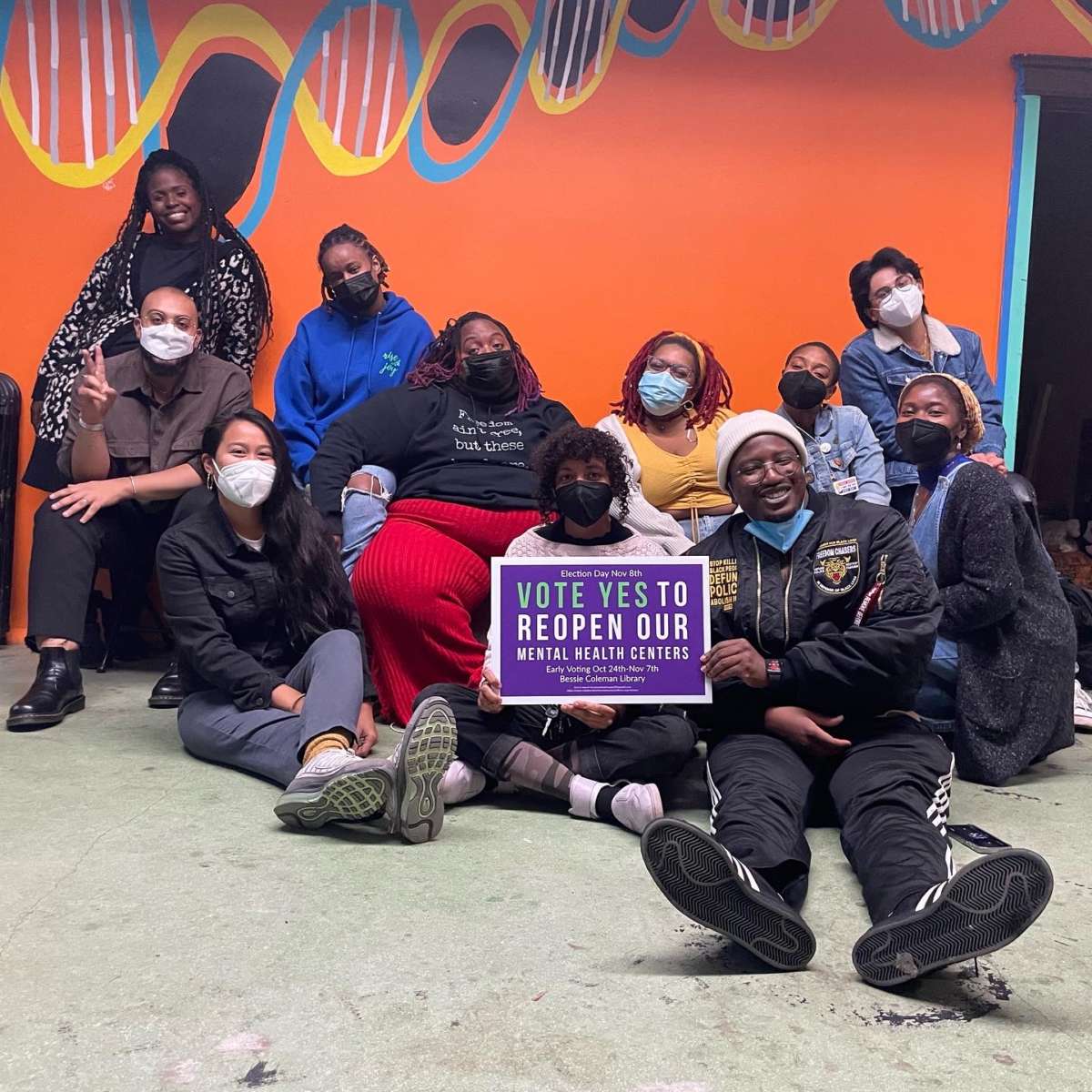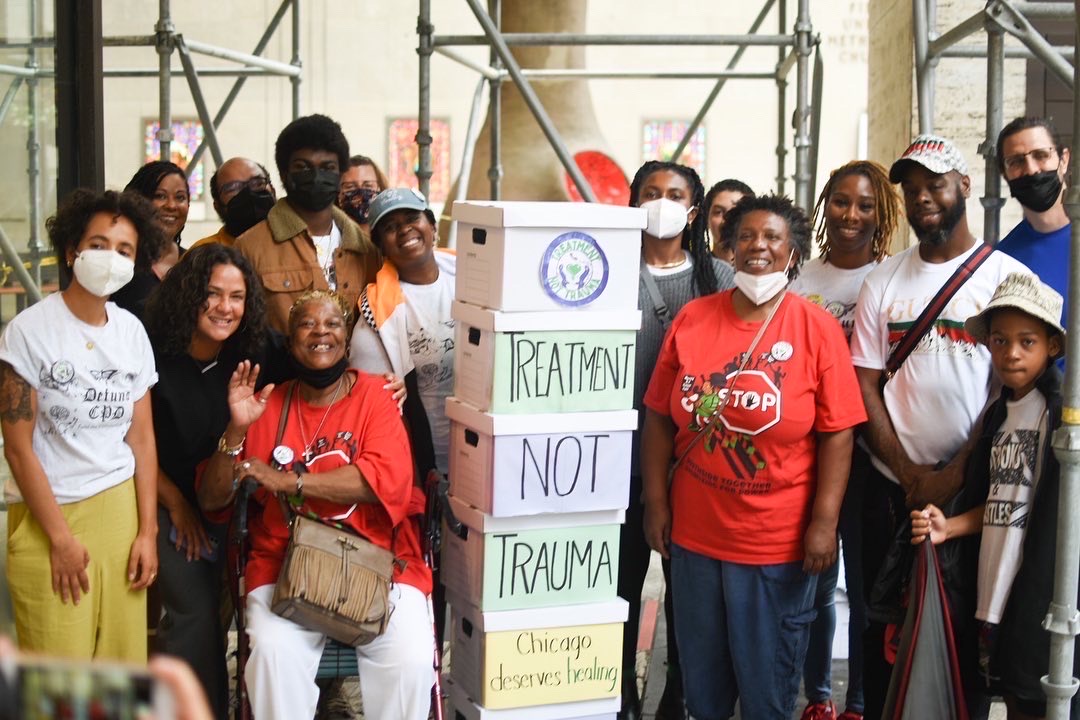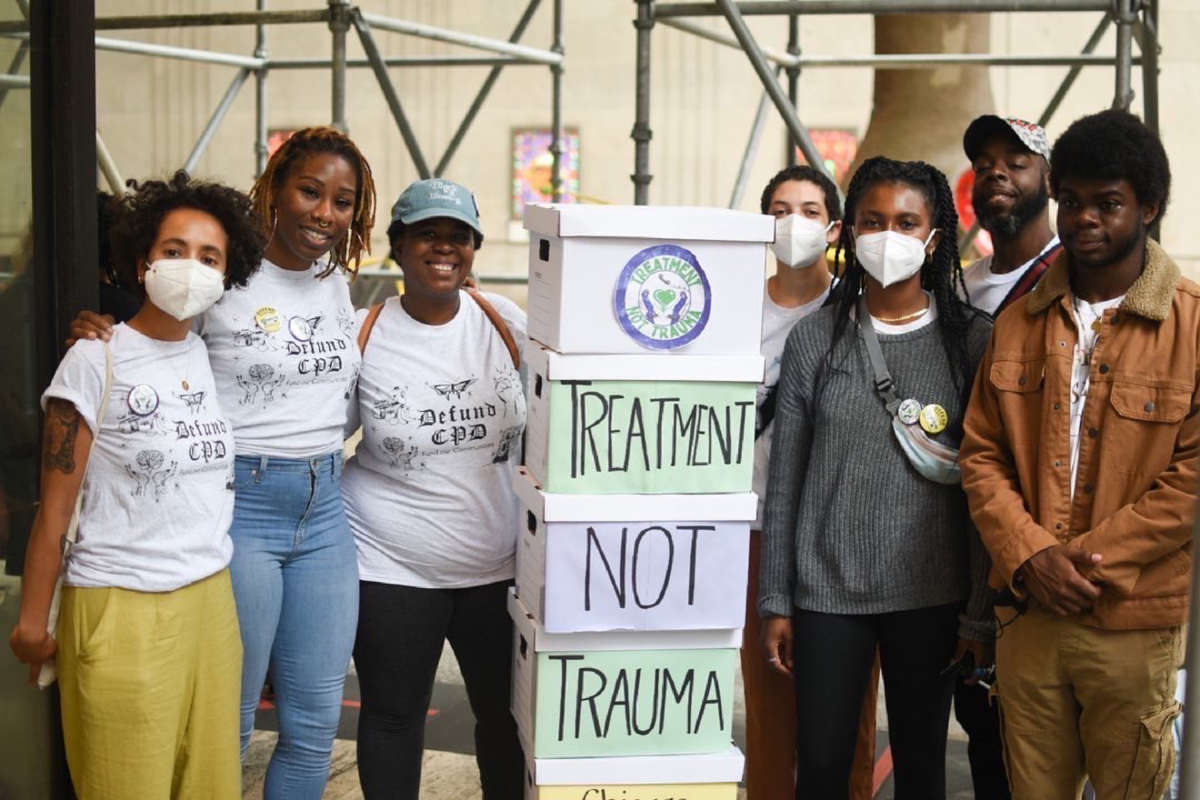Did you know that Truthout is a nonprofit and independently funded by readers like you? If you value what we do, please support our work with a donation.
In Chicago, the Treatment Not Trauma campaign won overwhelming community support for a non-binding referendum calling for investment in public mental health centers and a non-police crisis response system. Authored by 33rd Ward Alderperson Rossana Rodriguez and envisioned by a coalition of community groups and stakeholders, the ordinance calls for developing a Chicago Crisis Response and Care System within the Chicago Department of Public Health.
On November 8, residents in three wards said “yes” to the Treatment Not Trauma campaign, for an overwhelming win. The 6th, 20th and 33rd wards received 98 percent, 96 percent and 93 percent “yes” votes, respectively. The Treatment Not Trauma campaign — which includes the Collaborative for Community Wellness, Southside Together Organizing for Power, 33rd Working Families, DefundCPD, and most crucial of all, individual community members — sustained the effort through thousands of calls, conversations and doorknocks from mental health professionals, community organizers and residents.
The referendum results combat the idea that Black and Brown residents of Chicago are opposed to mental health investment and divestment from policing.
And Chicago isn’t the only city where organizers are fighting for non-police mental health responses and mental health care systems. In Ann Arbor, Michigan, the city council voted in April 2021 to invest $3.5 million in federal stimulus funding into a non-police mental health crisis response system. On November 4, the city officially closed its community engagement survey, which asked for input from residents in an effort toward community accountability.
Ann Arbor will hopefully create a system similar to models like CAHOOTS in Eugene, Oregon, the Street Crisis Response Team in San Francisco, MH First in Oakland, and B-HEARD in New York City. These cities use a non-police crisis response model and send a person trained in medical support to help people experiencing mental health crises, reducing the frequency of criminalization and harm. This role could be filled by an emergency medical technician (EMT), a social worker or a community member trained in deescalation. These programs have successfully treated mental health crises as a public health issue, not a public safety issue.
Studies show that people who encounter a police officer while experiencing a mental health crisis are 16 times more likely to be shot and killed by police than people who are not experiencing a mental health crisis. Thirty-three to 50 percent of “use of force” incidents involve a disabled person, according to research by the Ruderman Family Foundation.

Why Cops Are Wrong for the Job
Mental illness stigmatization has led to a widespread narrative of the out-of-control, violent mentally ill person — but in reality, people experiencing mental illness are more likely to be victimized. Mental health calls to emergency services are usually handled by police, which poses a public health danger. By putting officers in the position to act as mental health professionals, local governments endanger people’s lives, increasing the likelihood of imprisonment and death. In 2021, officers trained to use force for compliance claimed over 100 lives during mental health or wellness checks.
Mainstream analyses often attribute the risk factors of mental illness to individual ailments without a structural analysis of the systems that put people’s lives at risk. To paraphrase longtime abolitionist political leader Angela Y. Davis, carceral solutions only disappear people, not problems. Prisons have become some of the largest mental health institutions in the United States, with systemic racism and structural inequality exacerbating the criminalization of Black and Brown people. Policing is a reactionary measure rooted in social inequality that enforces white supremacy.
Public health investment could create infrastructure and preventative measures by establishing multiple points of crisis intervention before police involvement. Crisis intervention could include access to health and trauma care, nutritious foods, clean built environments, and more. Mental health crises can be mitigated or reduced in severity by meeting basic needs and developing clear care plans. Police respond to situations after they occur, so preventative measures would create more opportunities for community empowerment and combatting police violence. However, police budgets continue to increase in many cities while public infrastructure investment has declined.

During her 2019 campaign run, Chicago Mayor Lori Lightfoot promised to reopen the city’s closed mental health centers and fund an additional $25 million in mental health care systems. Instead in 2020, in the midst of the COVID-19 pandemic, Mayor Lori Lightfoot gave 60 percent of its discretionary American Rescue Plan funds — COVID recovery funds provided by the federal government — to the Chicago Police Department. On November 7, Lightfoot continued her mission to invest in policing when her budget was approved by the city council by a vote of 32-18, with an additional $64 million going toward policing.
Of the original 19 public mental health centers in Chicago, 10 were shut down between former mayors Richard Daley and Rahm Emanuel. Five public mental health clinics remain in a city of 3 million people, where 79 percent of the city has less than 0.2 therapists per 1000 residents. Rahm Emanuel also participated in an attempted cover-up of the police killing of Laquan McDonald, a teenager experiencing a mental health crisis, after he was shot multiple times by police officers in October 2014. Community members have not forgotten the killing of Laquan and the attempted cover-up as police officers continue to harm young Black and Brown children.
Going forward into Chicago’s local elections in early 2023, the Treatment Not Trauma campaign will be calling on candidates to support structural mental health investment and demand that the City of Chicago invest in systems of care. Chicago will hopefully be among the ranks of cities running non-police crisis response systems and public mental health centers for all of its residents, not just the few.
Press freedom is under attack
As Trump cracks down on political speech, independent media is increasingly necessary.
Truthout produces reporting you won’t see in the mainstream: journalism from the frontlines of global conflict, interviews with grassroots movement leaders, high-quality legal analysis and more.
Our work is possible thanks to reader support. Help Truthout catalyze change and social justice — make a tax-deductible monthly or one-time donation today.
